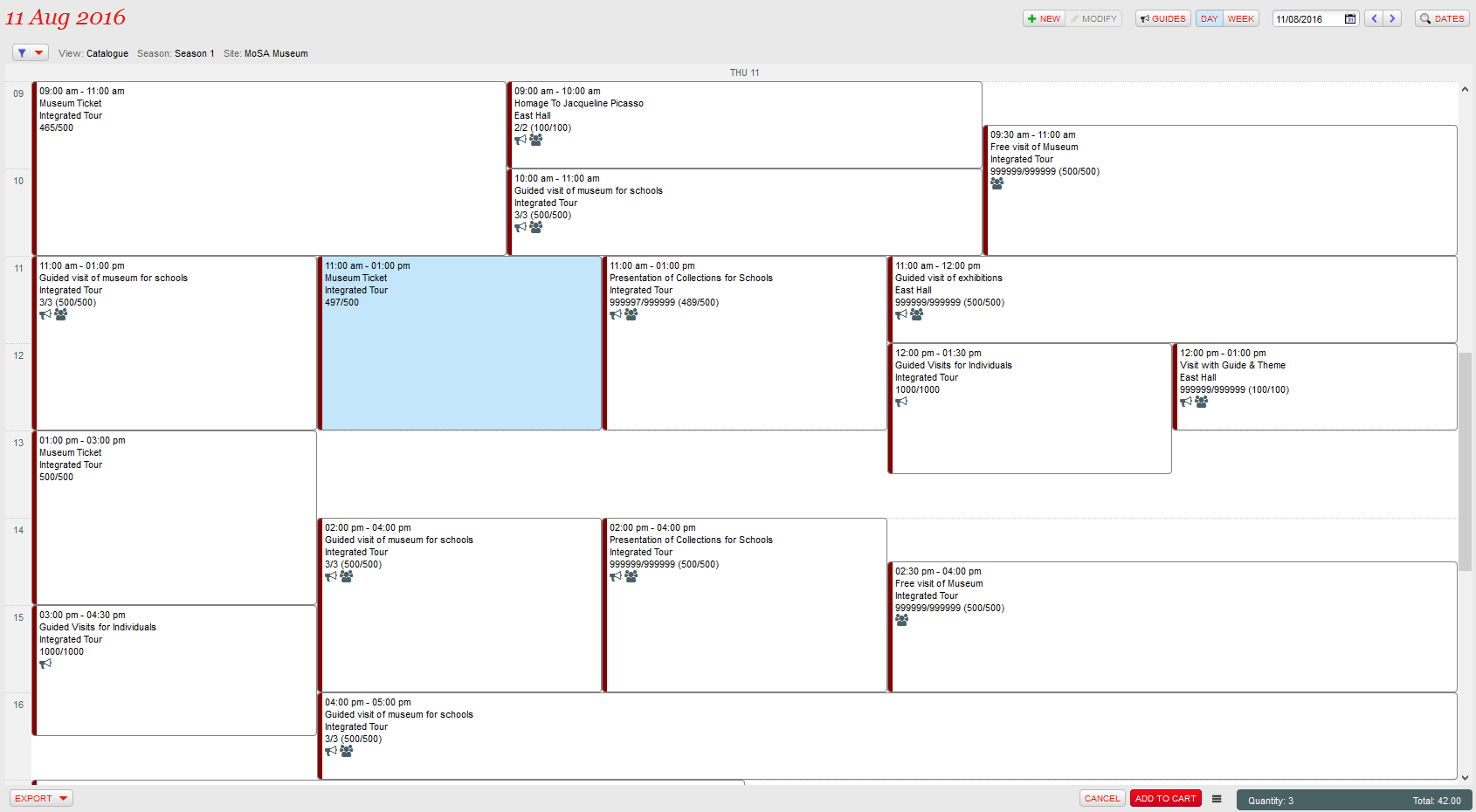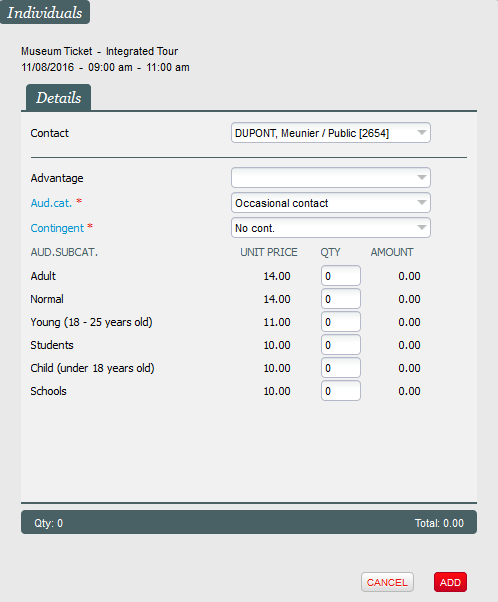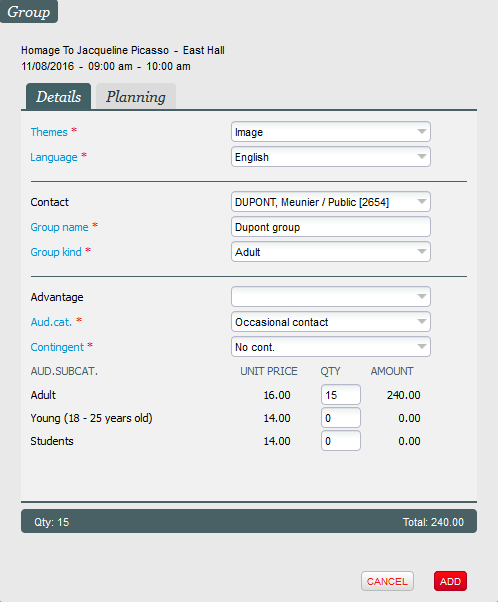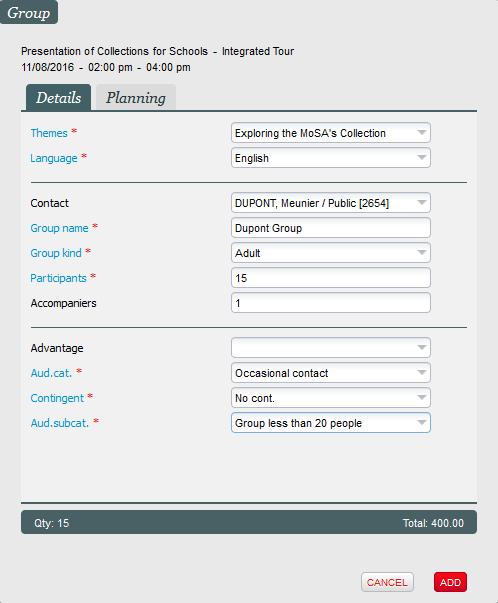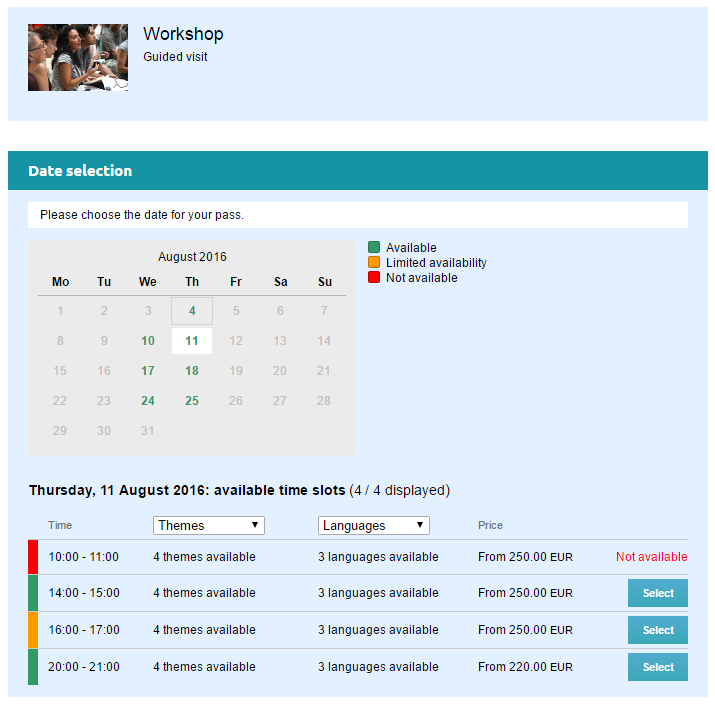Coexistence of old and new visits
While SecuTix previously offered the "Visit" product family, the new product family introduced in Matterhorn v2 offers many more functions while being easier to configure. We therefore advise customers to migrate to the new "Visit Pass" product family, for example at the start of the new season. In technical terms, the old and new ticket types can coexist without issue. However, we recommend keeping this period of coexistence to a minimum to avoid confusion.
Remember, the old product family was called "Visits" and the new product family is called "Visit pass".
Do you offer individual or group visits? Do you want to simplify visit management? Do you want a sophisticated management tool that brings together guides, themes and language? Adapted to all situations, the new "Visit pass" product family responds to your needs, from the simplest to the most sophisticated.
The different types of Visit passes
The new Visit pass product family offers a full range of ticket types that will enhance your offer.
- Open or guided visit
- Individual or group visit
- For group visits
- An individual rate with one ticket per person
- A flat rate with a group ticket
These elements allow four different types of visits to be offered.
Here are some specific cases
- Open or non-guided visit: A group of friends decides to visit a museum. Some of them decide to take an audio guide, some don’t.
- Individual guided visit: A family of tourists participate in the 11 a.m. guided visit in English.
- Group visit with individual rate: A tour operator books a visit for a group of 25 people as part of an organized trip. Each participant receives their ticket in advance with the rest of their trip documents.
- Group visit with flat rate: A school group of 18 people (including followers) participates in a guided visit. They pay a flat rate for up to 20 people.
Configure your "tailor-made" visit
Visits can be configured in a number of ways:
- Minimum group size: When someone (for example a school representative) books a group visit for a class, a guide must be allocated to the class. A minimum group size can be imposed in order to use the available guides as effectively as possible.
- Maximum size for a start: To guarantee the best experience for visitors, you may need to limit the number of persons participating in a particular visit. For example, if there are more than 20 people, visitors may be unable to hear their guide’s comments or see the piece being discussed. That’s why SecuTix allows you to define a maximum size, for example 20 people. This limit does not affect the booking process, because a representative may nevertheless book a visit for a group of 35 people. In such cases, the system will automatically split the group in two "starts", with a guide required for each one. These two groups will do the visit at the same time, with separate guides.
- Maximum number of simultaneous starts: The number of visits taking place at the same time may need to be restricted depending on the guide availability and/or the layout of the premises. For example, it could be better to avoid having to group starts too close to each other or from passing each other during the visit.
- Tolerance for the maximum size of a start: This tolerance allows you to avoid creating an unnecessary visit group (and therefore using an extra guide) in borderline cases. For example, a group of 42 people wish to book a visit when the maximum size for a start is 20. By setting a tolerance of two people, you can allocate two visit starts, rather than the three that would normally be expected.
Several Visit passes may coexist in the same time slot, and you can define the maximum number of simultaneous starts in a time slot or by Visit pass type. If, for example, a maximum of five simultaneous starts is set, you can impose a maximum of three simultaneous "School Visit" Visit passes so that this type does not monopolize all of the available starts.
Choose the theme and language management that suits you
Several management modes are available:
- Manage the language and theme. This is the most common and is suited to cultural institutions that offer several themed visits that are each available in one or several languages.
- Do not manage the language or the visit theme. This choice is suited to non-guided visits, visits with audio guides and visits with a multilingual guide.
- Manage the language only. This choice is suited for guided visits relating to a single theme where explanations are provided in several languages, with each group of visitors receiving information in a single language.
You can also set theme and language restrictions by time slot. For example, you can decide that the German-speaking guide is not available on Tuesday mornings.
Enjoy a wealth of functions
Ticket office
The box-office provides the usual processes, such as bookings, sales, exchanges and cancellations, as well as sales as part of or through advantages. The careful attention paid to ergonomics means that the new product selection screen greatly facilitates the work of operators. A full-screen central calendar is displayed, allowing them to select Visit pass products.
A calendar is available for each type of Visit pass: individual, individual guided visit, individual rate groups and flat rate groups.
Using this calendar, operators can create time slots on the fly, check guides’ availability and consult visits that have already been planned. To give operators a coherent experience, the calendar’s ergonomics have also been considered to address needs relating to planning and welcoming visitors. Therefore, the Visit pass product selection screen and the new planning calendar have identical visuals and as many common functions as possible.
The process of selecting advantages linked to the Visit pass has also been simplified and made more intuitive. Your operators may choose to apply an advantage directly, without having to go to the advantage selection screen.
Online sales
The online sale of Visit passes has been especially designed with end users in mind. Therefore, the selection ergonomics adapt on the fly according to the type of visit selected by the user.
The key elements are:
- A calendar that displays overall availability each day.
- A list of time slots for each day and the availability for each one, along with the possibility of filtering by visit theme and language.
- Quantities and rates are indicated on the second page. In the case of group Visit passes, this page also allows information on the group to be collected, for example the group name, nature of the group (whether a school, association, etc.) and any comments.
The normal functions of SecuTix 360° are compatible, namely:
- The creation of a package based on Visit pass. However, packages containing a flat rate group Visit pass are not supported.
- The sale of Visit passes using an advantage.
- Classic cross-selling.
Group tickets and access control
The Visit pass allows for the use of a group ticket, where a single ticket is issued for the entire group. A quantity, or group size, is associated with it.
When a group ticket is checked, the number of people in the group is displayed on the screen of the Bluebird access control devices (Android). This information is displayed inside a circle, whether the result of the control is OK, KO or reduced rate.
What about Windows Mobile devices?
PDAs that run on Windows Mobile cannot display this information. However, they are able to carry out scans correctly, and a group’s size is available in the ticketing report.
Statistics on the number of visitors (different from the number of scanned tickets) will be available:
- In access control, when the control list is exported.
- In the "ticket list" report available through the "Sales management" > "reports" menu.
Touch cart and ticket machine sales
The ticket machines have been adapted to allow selling individual visit passes. The screens currently used to purchase simple visits can been used for this new product type.
Reporting
Ticketing and access control reports have been adapted to take the different types of Visit passes into account. For example, they provide information on the groups, guides and spaces associated with the visits.

